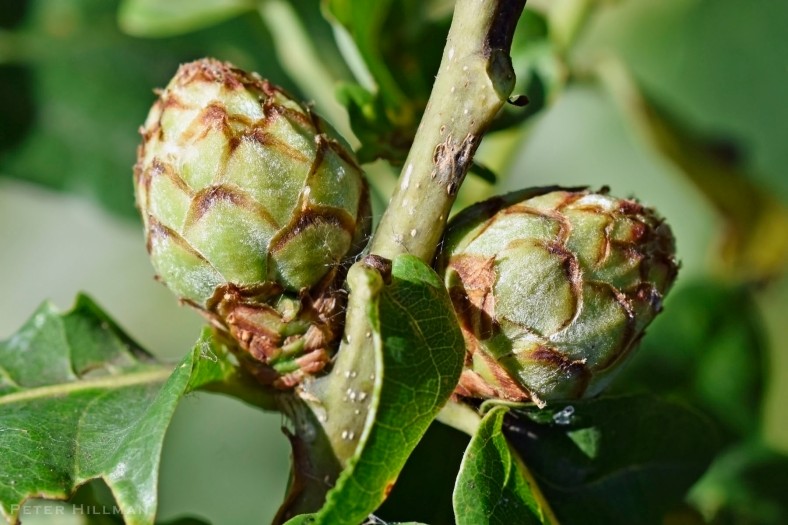Andricus foecundatrix – Another gall which forms on oaks. The asexual generation of the Artichoke Gall Wasp (Andricus foecundatrix) is responsible for causing these galls which grow from Pedunculate Oak (Quercus robur) or Sessile Oak (Quercus petraea) leaf buds. Also called the Hop Gall, a single larva develops within the gall to maturity in August, when it falls from the tree for pupation to take place during the winter. In spring the adult wasps emerge to lay eggs in oak catkins, from which the sexual generation will eventually emerge.

I am enjoying your series on galls and find myself looking more closely at the vegetation in my garden. I know that when summer comes I will probably find some galls on the leaves of the Erythrina tree – by now I am hoping I will!
LikeLiked by 1 person
I am pleased you are enjoying the gall series. I find them fascinating.
LikeLike
I’m impressed with your wasp knowledge.
LikeLiked by 1 person
Thank you 🙂
LikeLike
Fascinating life cycle!
LikeLiked by 1 person
The gall does look rather like an artichoke; the name certainly fits.
LikeLiked by 1 person
Later lately your posts seem to a have a lot of gall. Sorry as much as I tried not to write this, I just couldn’t resist. 🙂
LikeLiked by 2 people
Lol! 🙂
LikeLiked by 1 person
Looks they are real pests!
LikeLiked by 1 person
They do not harm the tree 🙂
LikeLike
This is totally bizarre. Are you a scientist as well as a photographer?
LikeLiked by 1 person
I just a have fascination for plant galls. There are around 100 different species that can be found on an oak tree.
LikeLiked by 1 person
So does that cover all types of oaks from all over? Or are you speaking of your particular area?
LikeLiked by 1 person
I know the native oaks here, the English and Sessile oaks, support a lot of wildlife in general besides galls acrosss the country – up to around 300 species. I am always fascinated by the older, more ancient trees, and how they have supported and have been supported by wildlife for hundreds of years.
LikeLiked by 1 person